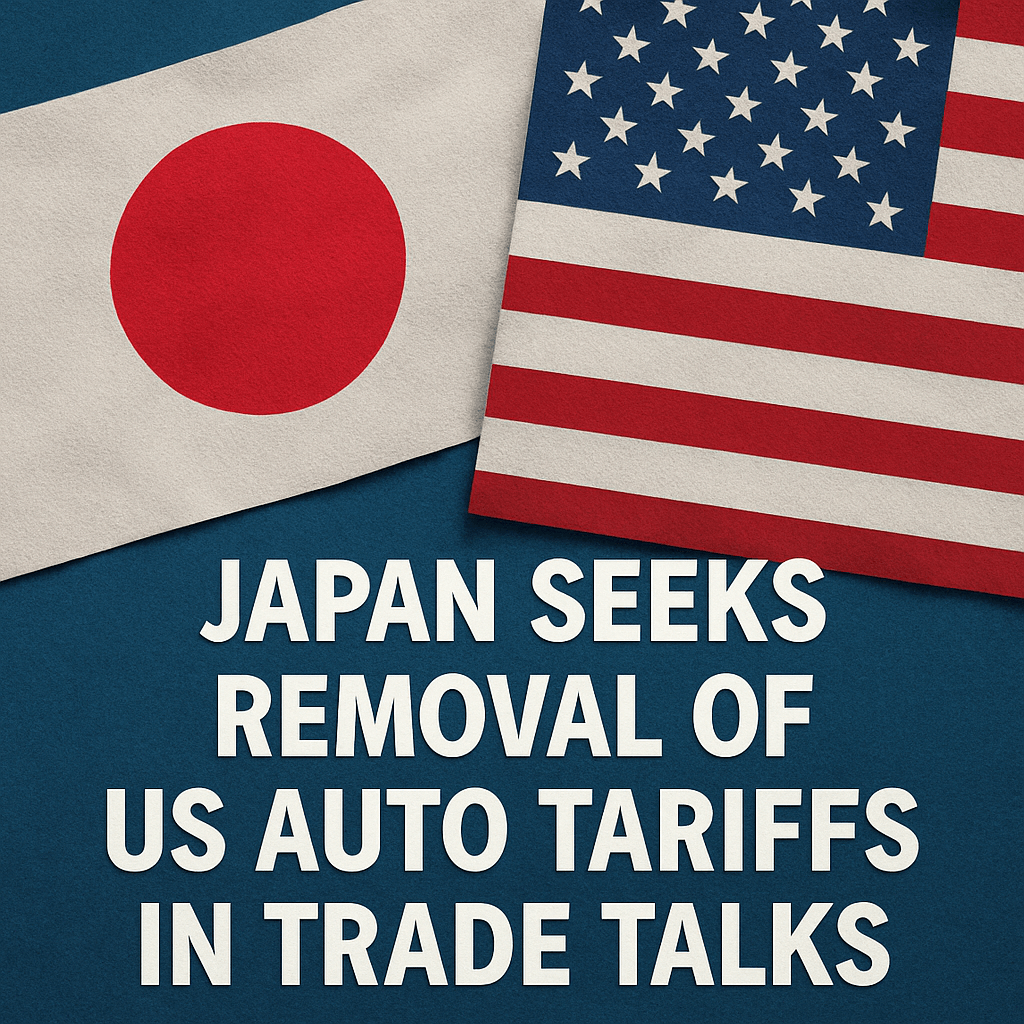Japan Seeks Removal of US Auto Tariffs in Trade Talks

Following a series of high-level discussions, Japan’s Economic Revitalisation Minister, Shigeru Ishiba, reiterated Tokyo’s demand that Washington remove recent import tariffs on Japanese automobiles. Speaking to the press, Ishiba stated, “Investment, not tariffs.” He emphasized that Japan remains committed to negotiating increased Japanese capital deployment in the United States—targeted at new factories and R&D facilities—in exchange for a full rollback of 25% duties on auto imports.
Background: The Third Round of Tariff Talks
Earlier this week, Japan’s chief tariff negotiator, Economic Revitalisation Minister Ryosei Akazawa, traveled to Washington for the third round of bilateral consultations. Despite the U.S. administration’s partial easing of steel and aluminum duties under Section 232 of the Trade Expansion Act (15 U.S.C. § 1862), higher-rate auto tariffs remain in force.
“We pressed for a comprehensive removal of the 25% automotive tariff,” Ishiba told reporters after meeting President Trump. “He made no specific commitment, but we agreed on the need for productive discussion.”
Key Discussion Points
- Tariff Elimination: Japan demands the U.S. fully rescind Section 232 auto tariffs to restore pre-2018 trade conditions.
- Reciprocal Investment: Tokyo offers to incentivize Japanese automakers and suppliers to expand manufacturing and R&D in U.S. states, potentially creating 20,000–30,000 jobs.
- Security Cooperation: The leaders touched on regional security, including coordination in East Asia and recent U.S. initiatives in the Middle East.
- Future Engagement: Both sides agreed to reconvene at the upcoming G7 summit in Canada.
Technical Analysis: Tariff Structures and Economic Impact
Automotive imports from Japan fall under Harmonized System (HS) codes 8703 and 8704. A 25% ad valorem duty raises landed costs by an average of $4,500 per vehicle. According to a Nomura Research Institute report, a full tariff rollback could reduce U.S. consumer prices by up to 5% and improve Japanese auto export volumes by 15% year-on-year.
Steel and Aluminum Duties
- Steel HS Chapter 72: 25% tariff (partially lifted on certain Japanese alloys).
- Aluminum HS Chapter 76: 10% tariff (some exclusions remain temporary).
Combining automotive duties with input-metal levies multiplies cost pressures on automakers. Honda and Toyota have already reported a combined $1.2 billion hit to margins in FY 2023 due to elevated raw-material and tariff costs.
Investment Strategies and Sectoral Implications
Industry analysts at Goldman Sachs project that Japanese carmakers could allocate up to $30 billion over the next five years in U.S. greenfield projects, focusing on:
- Electric Vehicle (EV) Plants: Battery assembly lines near the U.S. Southeast to capitalize on state incentives.
- Semiconductor Fabrication: Joint ventures in Arizona and Texas to secure chip supplies.
- R&D Centers: Innovation hubs in Silicon Valley and Detroit for advanced driver-assistance systems (ADAS).
Such direct investment could generate secondary economic effects, including local supplier networks benefiting steel, plastics, and electronics producers.
Expert Opinion
Dr. Keiko Yamamoto, trade economist at the University of Tokyo, notes: “If the U.S. administration drops the auto tariffs, we may see a rebalancing of bilateral trade to Japan’s advantage. However, geopolitical factors—such as U.S.-China tech rivalry—could complicate purely economics-driven outcomes.”
Outlook: Preparing for the G7 Summit
Both sides have indicated they will use the upcoming G7 Summit in Canada as a platform to escalate discussions. Market participants will watch for any framework agreement that ties tariff elimination to concrete investment pledges.
Read on YieldRadar.info* for continuing coverage of U.S.-Japan trade negotiations, sectoral impacts, and geopolitical analysis.